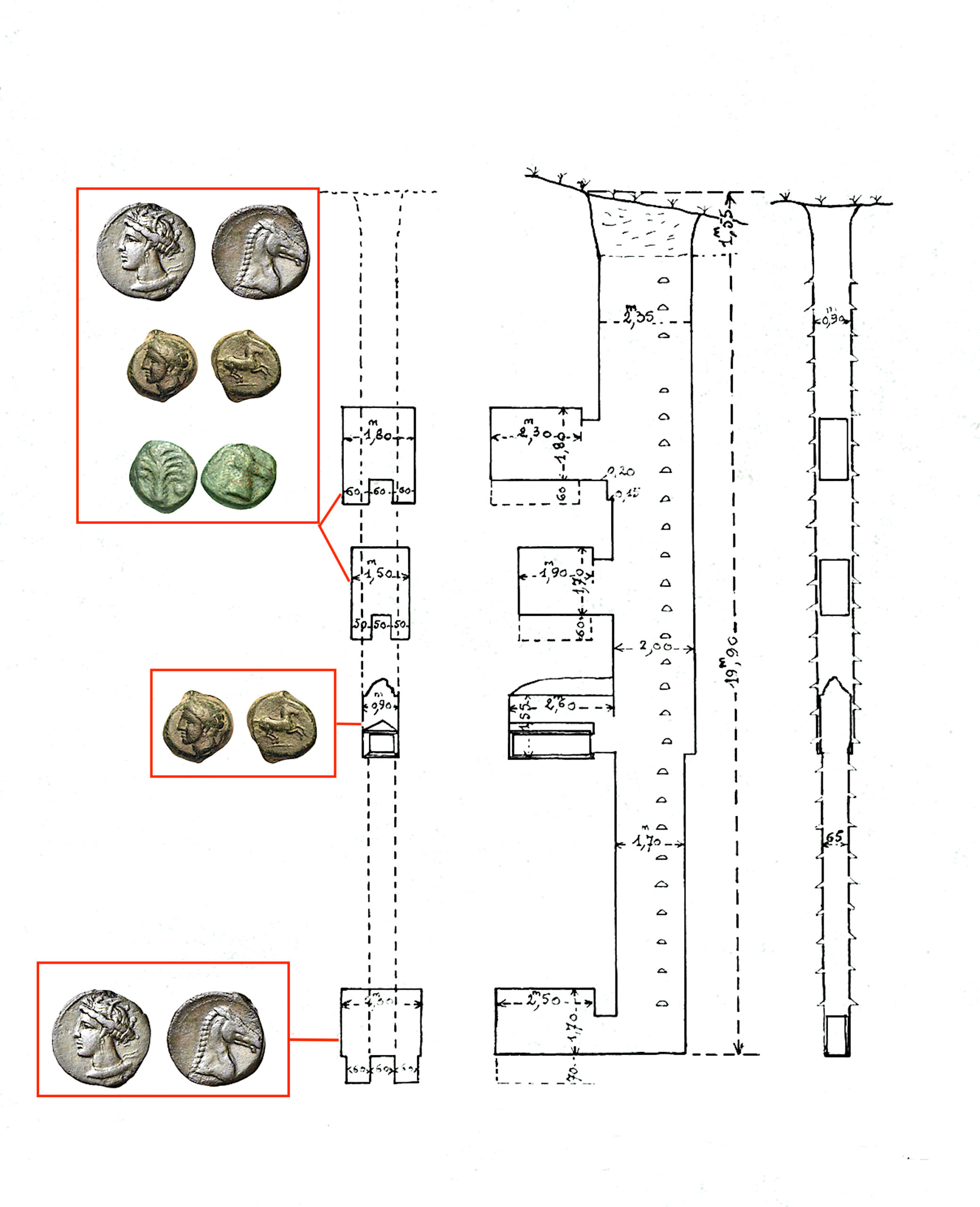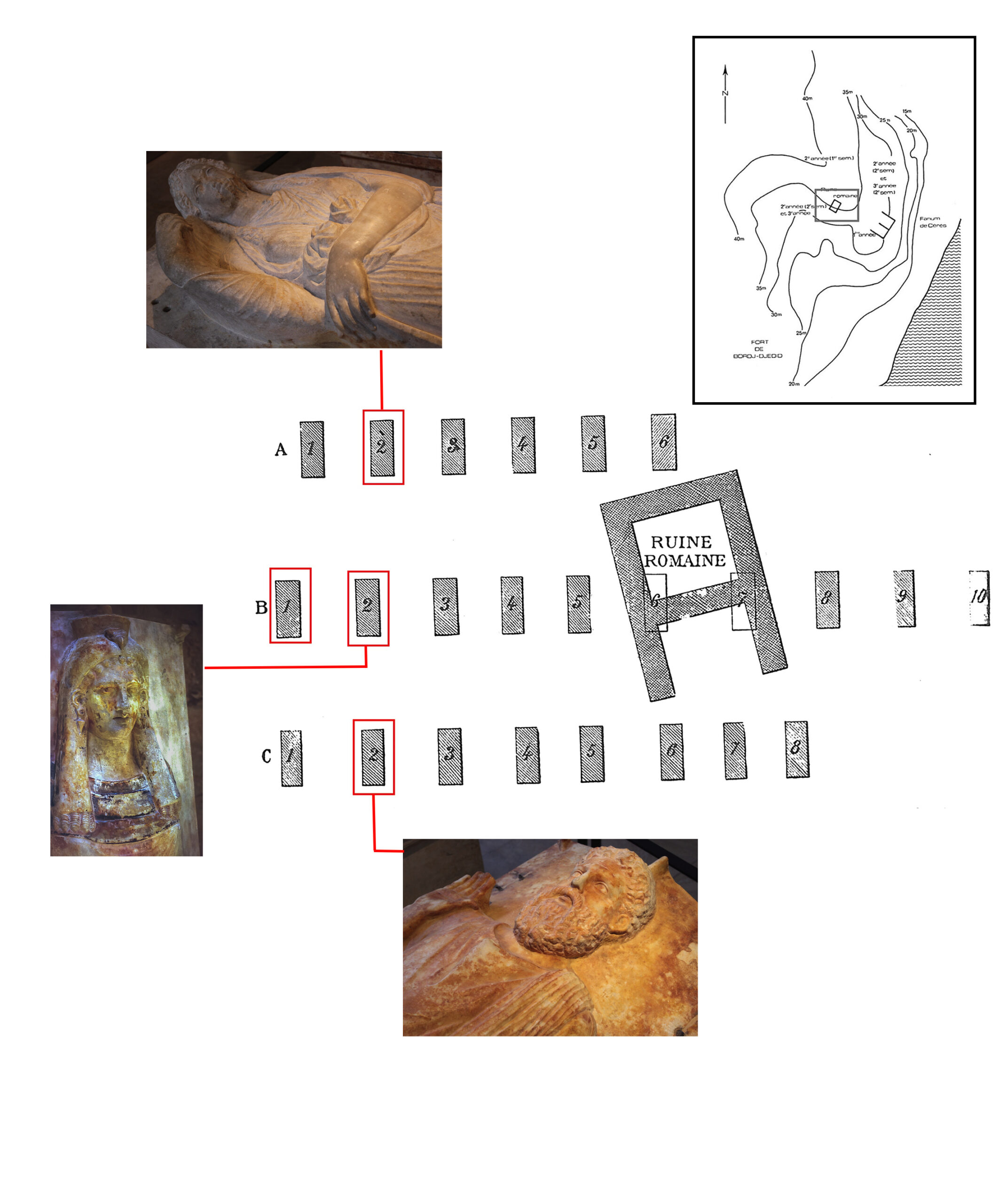The archaeological situation offered by the studies on Carthage is extremely complex because the ancient and archaeologically sensitive part of the city is still inhabited today and the the excavations of its funerary sectors, conventionally referred to by the names of the various quarters of reference and an indication of widespread burial constructions that were progressively enlarged on the edges of the inhabited areas, were areas, were carried out mainly between the end of the 19th century and the first half of the 20th century.first half of the 20th century.
A further obstacle to a full understanding of the funerary reality is the very physiognomy of the graves. physiognomy of the Carthaginian burials themselves, which show diversified forms, from simple individual from the simple individual burial pit or caisson to the more complex collective tombs with wells and chambers which and chambers that presumably housed members of the same family.
Although the appearance of coins in grave goods can be traced back to the beginning of the 4th century B.C., it is still possible to find coins in the tombs beginning of the 4th century BC. According to some scholars, there are sporadic indications of an earlier appearance of the numismatic find appearance of numismatic objects in graves as early as the end of the 5th century BC.
Image Captions :
Fig 1: Carthage, areas of the Punic necropolises (from Benichou-Safar 1982, fig. 139): IV-III century tomb sectors highlighted in red. A. C., including the minor nucleuses, which have returned coins evidence (graphic elaboration by L. Attisani, ISPC-CNR)
Fig 2 : Carthage, hill near Sainte Monique (from Benichou-Safar 1982, fig. 58): transversal and longitudinal sections of the shaft tomb with four burial chambers, excavated on February 18, 1905. Side, some corresponding coin types shown only by way of example to the coins found (graphic elaboration by L. Attisani, ISPC-CNR)
Fig 3 : Carthage, necropolis of the Rabs (from Delattre 1904b, Fig. 2, Benichou-Safar 1982, Fig. 35): top right, indication of the burial area within the larger tomb complex on the hill near Sainte Monique; in the centre, detail of the Rabs area, with indications in red of the tombs and details of the three anthropoid sarcophagi (photographs by Pascal Radigue [CC BY-SA 4.0 (https://creativecommons.org/licenses/by-sa/4.0) ]) which returned monetary evidence (graphic reworking by the authors).



